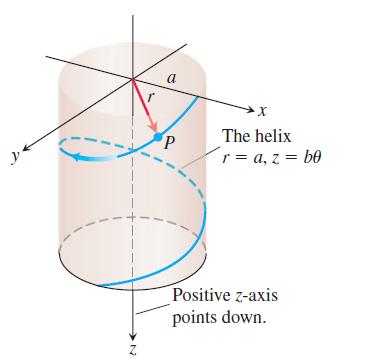A frictionless particle P, starting from rest at time t = 0 at the point (a, 0,
Question:
A frictionless particle P, starting from rest at time t = 0 at the point (a, 0, 0), slides down the helix![]()
under the influence of gravity, as in the accompanying figure. The θ in this equation is the cylindrical coordinate θ and the helix is the curve r = a, z = bθ, θ ≥ 0, in cylindrical coordinates. We assume θ to be a differentiable function of t for the motion. The law of conservation of energy tells us that the particle’s speed after it has fallen straight down a distance z is √2gz, where g is the constant acceleration of gravity.
a. Find the angular velocity dθ/dt when θ = 2π.
b. Express the particle’s θ- and z-coordinates as functions of t.
c. Express the tangential and normal components of the velocity dr / dt and acceleration d2r/dt2 as functions of t. Does the acceleration have any nonzero component in the direction of the binormal vector B?
Step by Step Answer:

Thomas Calculus Early Transcendentals
ISBN: 9780321884077
13th Edition
Authors: Joel R Hass, Christopher E Heil, Maurice D Weir





